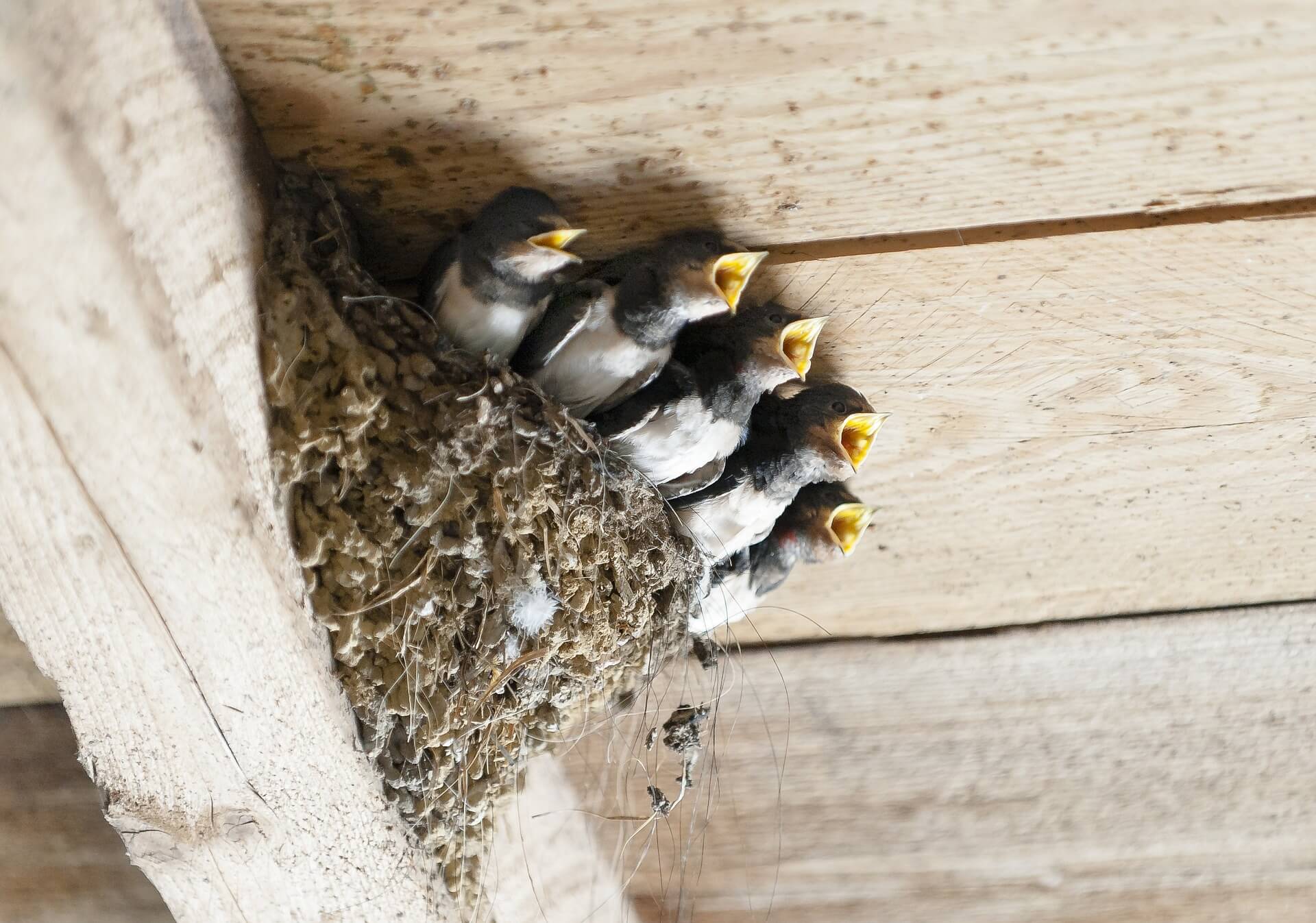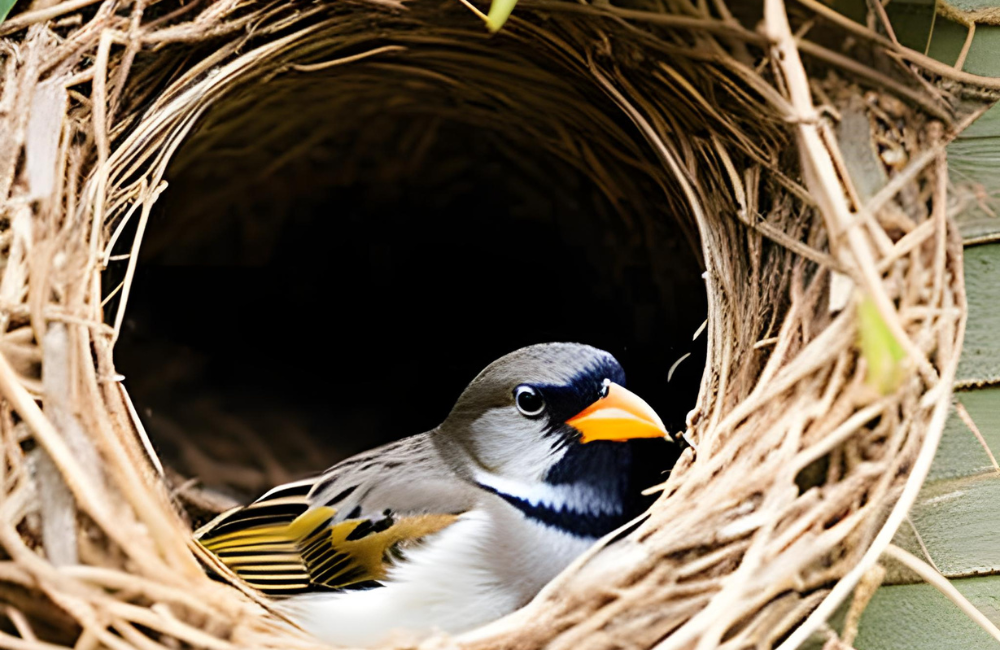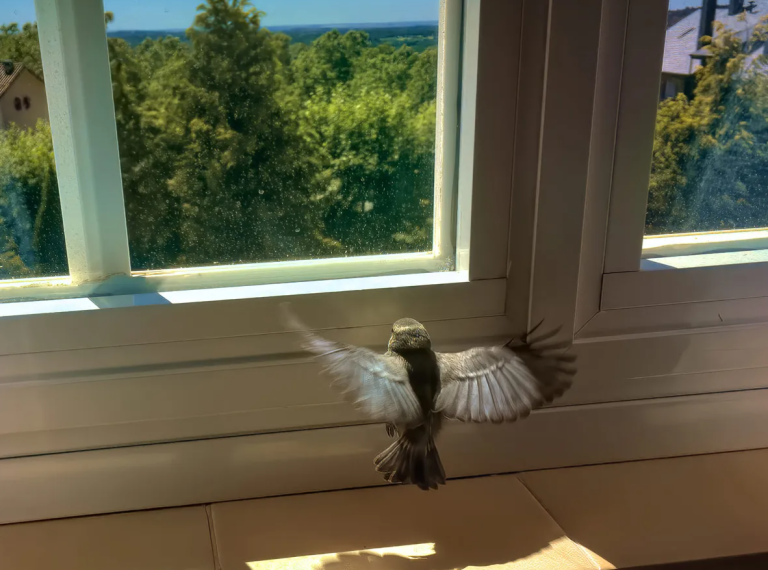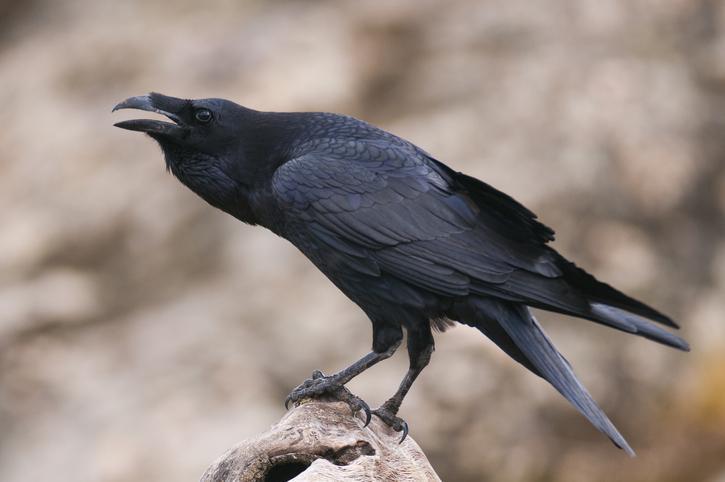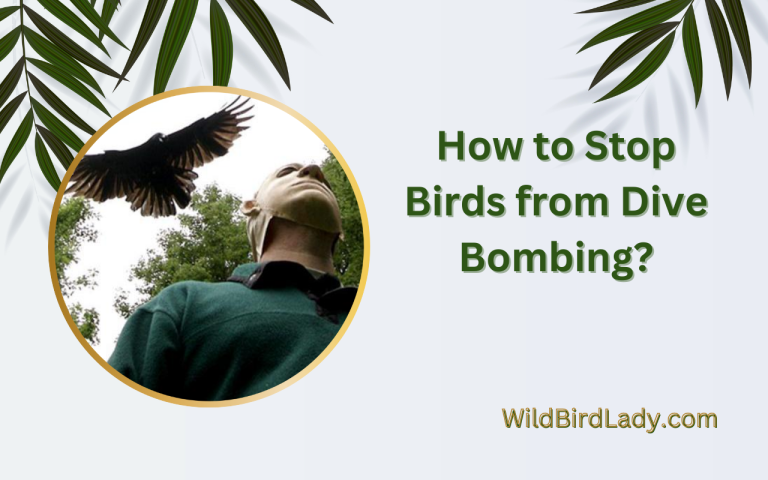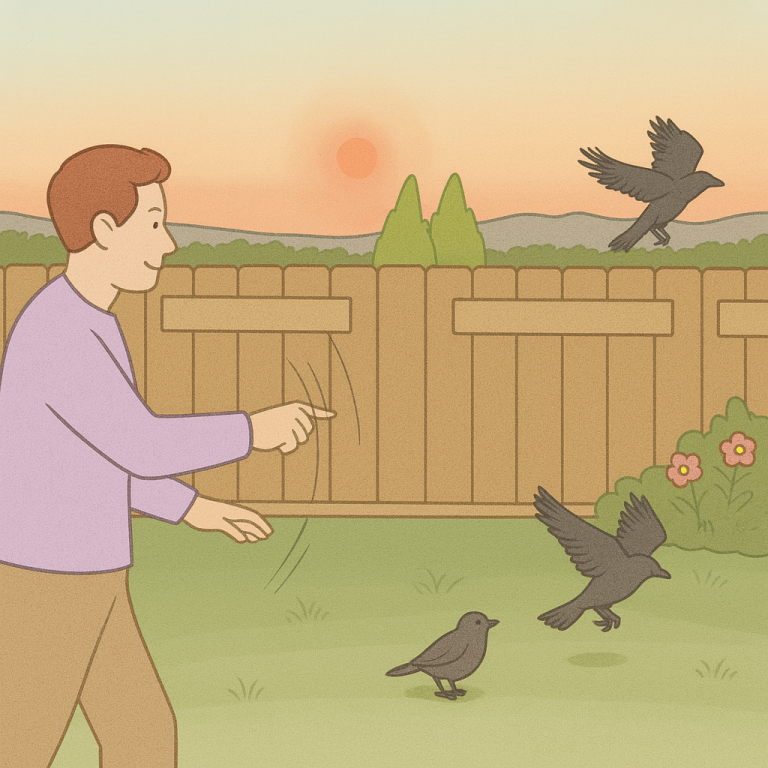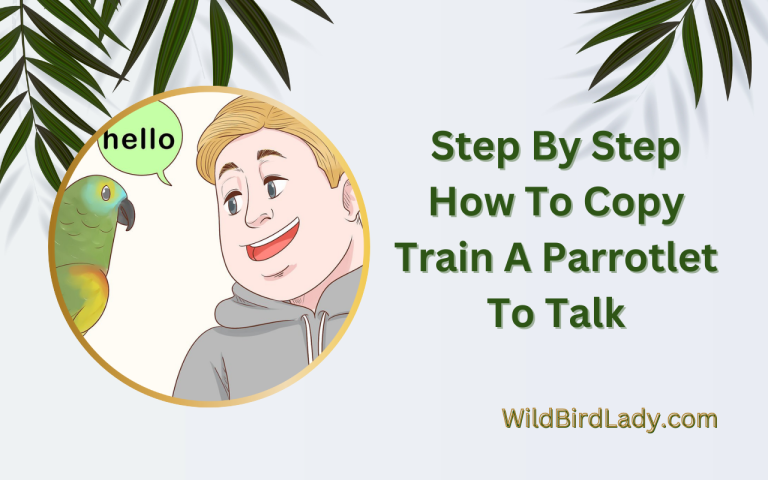5 Proven Methods For Bird Nest Removal Under Your Deck
To handle a bird nest under a deck, wait until the young birds have left the nest and then remove it carefully. Bird nests should not be disturbed while the chicks are still present.
Bird nests under decks can be a nuisance and pose a potential health hazard due to bird droppings and debris. But improper handling can harm the birds or their chicks. The best way to handle a bird nest under a deck is to wait until the young birds have left the nest and then remove it carefully.
This gives the birds time to grow and learn to fly before leaving their safe haven. In this article, we will outline the most effective ways to handle a bird nest under a deck without causing harm to the birds or disrupting their environment.
Understanding Bird Nesting Habits
Birds are fascinating creatures that have unique nesting habits. While some birds prefer to build their nests in trees or open areas, others choose to build their nests under decks. Understanding bird nesting habits is crucial in effectively handling a bird nest under a deck.
In this section, we will discuss three key factors: reasons why birds prefer to nest under decks, common bird species that nest under decks, and methods for identifying active bird nests under your deck.
Reasons Why Birds Prefer To Nest Under Decks
Birds choose to build their nests under decks for several reasons, including:
- Protection from predators: Decks provide shelter from predators such as cats and raccoons that might attack the birds or their young.
- Protection from the weather: Decks offer protection from wind, rain, and harsh sun rays.
- Nesting space: Birds typically build their nests on horizontal surfaces, and the underside of a deck mimics the perfect spot.
- Proximity to food: Many birds feed on insects and bugs that live under decks.
Identifying Common Bird Species That Nest Under Decks
Different bird species have varying preferences for nesting locations. While some species prefer to nest in trees, others choose to nest under decks. Some of the most common bird species that nest under decks include:
- Robins
- Sparrows
- Swallows
- Finches
- Blackbirds
Each bird species has distinct characteristics to help with identification. For example, sparrows have brown streaks on their back and white bellies.
Methods For Identifying Active Bird Nests Under Your Deck
Identifying an active bird nest under your deck can be challenging, but there are a few things to look for:
- Watch for birds carrying nesting materials: Birds carrying nesting materials such as twigs and grass are usually building a new nest or repairing an existing one.
- Listen for bird songs: Birds communicate with each other using their songs, and the sounds can give clues to the presence of a nearby nest.
- Look for bird droppings and feathers: A concentration of bird droppings and feathers in one area under the deck could indicate an active nest.
- Check for eggs or young birds: Eggs and baby birds indicate that a nest is active and should not be disturbed.
Understanding bird nesting habits is essential to handling a bird nest under a deck effectively. With this knowledge, homeowners can identify the species of birds and take appropriate measures to ensure their safety while protecting their deck and home.
Method 1: Physical Removal Of Nest
Safety Precautions To Be Taken Before Attempting Bird Nest Removal
Removing a bird’s nest from under your deck can be challenging and risky. You don’t want to harm the birds, and you don’t want to injure yourself in the process. So, before starting, there are a few safety precautions you should take to avoid any accidents or injuries:
- Wear protective gear, such as gloves and eye goggles, to avoid being pecked or scratched by birds.
- Check if the birds are endangered or protected in your area before proceeding. If they are, you might need a permit to remove the nest.
- Ensure that you are not disturbing the nest during the breeding season because this can cause the birds to abandon their eggs or babies.
- Have a first-aid kit nearby in case of any injuries or accidents.
Tools Required For Physical Removal
To remove a bird’s nest from under your deck physically, you require the right tools. Here are some of the essential tools you might need:
- Ladder: A ladder will be useful to reach the nest comfortably.
- Garden gloves: Wearing garden gloves will protect your hands from any scratches or bites.
- Plastic bag: A plastic bag will be useful to collect the nest and other debris.
- Scissors/pruning shears: You will need a pair of scissors or pruning shears to cut the nest from its support.
Step-By-Step Guide On How To Remove A Bird’S Nest From Under Your Deck Safely And Effectively
Now that you know how to prepare for the bird’s nest removal let’s delve into the step-by-step guide to follow when removing a bird’s nest from under your deck.
- Assess the nest: Before removing the nest, closely assess the nest to determine whether it’s occupied or abandoned. If there are eggs or baby birds, do not remove the nest, as this will lead to the death of the birds. You can wait until the birds grow and fly away before removing the nest.
- Wear protective gear: Wear protective gear, such as gloves and goggles, to avoid injuries while removing the nest.
- Use a ladder: Place a ladder securely against the deck and climb up to the nest’s location.
- Remove the nest: Carefully cut the nest from its support using scissors or pruning shears, ensuring that you are not harming any birds or eggs.
- Collect debris: Once you’ve removed the nest, collect any debris that might have fallen.
- Disinfect the area: Use a disinfectant to remove any bird droppings or any other contaminants in the area.
Tips For Disposing Of The Nest.
After the nest removal, the next crucial step is disposing of the nest. Ensure that you dispose of the nest appropriately by following the tips below:
- Put the nest and all other materials into a sealed plastic bag.
- Place the plastic bag containing the nest into another sealed plastic bag.
- Dispose of the double-bagged nest in the trash can, away from your home.
- Do not reuse the nest material or let it accumulate around your home as this will attract other birds to nest in the same area.
By following the above steps, you’ll safely and efficiently remove a bird’s nest from under your deck. Always remember to take protective measures, assess the nest, and dispose of the nest material appropriately to avoid any accidents.
Using A Wildlife Removal Service
Birds are beautiful creatures that we often enjoy watching, but when they decide to nest under a deck, it can become a problem. Not only can their nest cause damage to the structure, but it can also become a breeding ground for pests and lead to unsanitary conditions.
In this blog post, we will discuss effective ways to handle a bird nest under a deck, focusing on the subheading: using a wildlife removal service.
Choosing A Reputable Wildlife Removal Service
When choosing a wildlife removal service, it’s important to do your research to ensure they are reputable and reliable. Some key factors to consider include:
- Licensing and certifications: Make sure the company is licensed and certified to handle wildlife removal in your area.
- Experience: Look for a company with several years of experience in wildlife removal, as they will have the knowledge and expertise to handle any situation.
- Customer reviews: Read reviews from previous customers to gauge their level of satisfaction and the quality of service provided.
- Pricing: Get multiple quotes from different companies to compare pricing and ensure you are getting a fair deal.
Pros And Cons Of Hiring A Professional Service
While hiring a professional wildlife removal service can provide many benefits, there are also some drawbacks to consider. Here are a few pros and cons:
Pros:
- Professional expertise: Wildlife removal experts have the knowledge and equipment to effectively and safely remove birds and their nests.
- Prevention measures: They can also provide recommendations on how to prevent future bird nest problems.
- Legal compliance: Hiring a professional service ensures that you are meeting any legal requirements regarding wildlife removal in your area.
Cons:
- Cost: Professional wildlife removal services can be expensive.
- Time: Depending on the company’s availability, it may take some time to schedule an appointment.
- Relocation: Some wildlife removal services may relocate the birds instead of euthanizing them, which could lead to future problems if they return to the nesting site.
Cost Considerations
The cost of hiring a professional wildlife removal service can vary depending on several factors, including the location and severity of the bird nest problem. Here are a few cost considerations to keep in mind:
- Flat fee vs hourly rate: Some companies offer a flat fee for wildlife removal services, while others charge an hourly rate. Make sure to clarify this before hiring a company.
- Additional costs: There may be additional costs for disposing of the bird nest and any debris, as well as repairs to any damage caused by the birds.
- Insurance coverage: Check with the company to see if they have insurance coverage in case of any damage or accidents that occur during the removal process.
Hiring a reputable wildlife removal service can be an effective way to handle a bird nest under a deck. Consider the pros and cons, do your research, and compare pricing to ensure you are making the best decision for your situation.
Method 2: Deterrents
If removing the bird nest is not a feasible option, deterrents can be a great way to solve the problem. Deterrents work by making the area under your deck seem unattractive to birds, so they look for a different place to nest.
Here are some types of deterrents available to help keep birds away from under your deck:
Types Of Deterrents Available
- Visual deterrents: These types of deterrents work by scaring birds away with visual objects or by changing the look of the area under your deck. Some visual deterrents include:
- Fake predators such as owls or snakes
- Wind chimes or reflective objects that scare birds with movement or shiny surfaces
- Netting or wires that cover the area under your deck and make it difficult for birds to land or nest
- Audio deterrents: Audio deterrents work by playing sounds that are unpleasant for birds to hear. Some audio deterrents include:
- High-pitched noises that birds can hear but humans can’t
- Sounds of predators or distress calls of other birds to scare away birds
- Loud music or noise to make the area seem uninviting
- Scent deterrents: These types of deterrents work by using smells that are unpleasant to birds. Some scent deterrents include:
- Essential oils such as peppermint or citronella that birds dislike
- Pre-made bird repellent sprays that use natural or artificial scents to deter birds
How To Install Deterrents To Keep Birds Away From Under Your Deck
Once you’ve decided on the type of deterrent you want to use, it’s important to install it correctly to ensure maximum effectiveness. Here are some tips on how to install different types of deterrents:
- Visual deterrents: Make sure to place fake predators or reflective objects in areas where they can be seen by birds. Covering the area under your deck with netting or wires can be an effective way to keep birds from landing or nesting.
- Audio deterrents: Place speakers in the area where birds congregate and face them toward the nesting area. Be sure to keep the volume at a level that is audible but not harmful to birds or humans.
- Scent deterrents: Spray or place the repellent in areas where birds tend to congregate. Reapply as necessary to maintain the effectiveness of the repellent.
Avoiding Common Mistakes With Deterrents
While deterrents can be an effective way to keep birds away from under your deck, they can also be ineffective if not installed or used correctly. Here are some common mistakes to avoid:
- Not using enough deterrents: Be sure to use enough visual, audio, or scent deterrents to cover the area under your deck.
- Using the wrong type of deterrent: Different types of birds are afraid of different types of visual, audio, or scent deterrents. Do your research to find out which type of deterrent is best for the birds in your area.
- Not changing the deterrent regularly: Birds can become accustomed to a deterrent if it is not changed regularly. Change the location or type of deterrent every few weeks to keep birds from becoming complacent.
By following these tips, you can effectively use deterrents to keep birds away from under your deck without harming them or their nests.
Method 3: Repellents
Chemical Repellents That Work For Bird Nest Removal
One of the most effective ways to remove bird nests under a deck is by using chemical repellents. Here are some types of chemical repellents that can help with the removal process:
- Methyl anthranilate: This chemical is a grape extract that is commonly used as a bird repellent. It is effective as it disrupts the bird’s nervous system, causing them to feel nauseous and ultimately deterring their return.
- Capsaicin: This is an active ingredient in chili peppers and is known to cause irritation to birds’ eyes, mouths, and skin. The chemical causes birds to stay away from a particular area, which has been treated with capsaicin.
- Polybutene: This chemical is sticky and thick, making it difficult for birds to grip onto surfaces. It is commonly used on roofs to deter birds, but it can also be used to get rid of bird nests under a deck.
How To Apply Repellents Properly To Keep Birds Away And Prevent Re-Nesting
When using repellents for bird nest removal, it is crucial to apply them properly. Here are some tips to help with the application process:
- Read the label carefully: Before using any chemicals, it is essential to read the label and follow the instructions provided. Make sure to wear protective gear like gloves and goggles.
- Apply repellents before nesting season: Make sure to apply the repellent before the nesting season starts, which will help prevent the birds from making nests in the first place.
- Reapply repellents yearly: Most repellents are only effective for a specific period of time. Reapply repellents yearly to keep the birds away and prevent re-nesting.
Discuss The Ecological Impact Of Repellents As A Solution
While chemical repellents are effective in getting rid of bird nests under a deck, they have an ecological impact on birds and the environment. Here are some points to consider:
- Chemical repellents can be harmful to birds if they are ingested. They can also harm other wildlife if they come into contact with it.
- Repellents can disrupt the natural habitat of birds and harm their food sources and environment.
- Using repellents as a long-term solution can lead to birds developing a resistance to the chemicals, leading to the need for higher concentrations or the use of stronger chemicals.
Therefore, it is essential to consider using humane bird deterrents that do not harm birds or the environment. One such solution is installing bird netting or bird spikes, which serve as a physical barrier to keep birds from nesting under your deck.
Method 4: Nest Box Installation
Benefits Of Installing A Birdhouse/Nest Box
Installing a birdhouse or nest box is an effective way to encourage birds to nest in a suitable location instead of under your deck. Some of the benefits include:
- Keeping birds safe from predators: Predators such as cats and squirrels can pose a threat to birds and their eggs. A birdhouse provides a safe, enclosed space for birds to breed and raise their young.
- Protecting the deck: Bird droppings and debris can accumulate under the deck if birds are nesting there, causing damage over time. Installing a nest box can help prevent this problem.
- Watching birds up close: A birdhouse allows for close observation of birds and their behavior, providing an excellent learning experience for bird enthusiasts of all ages.
Types Of Birdhouses Suitable For Different Bird Species
Different bird species have specific requirements when it comes to the type of nesting box they prefer. Here are some birdhouses suitable for different bird species:
- Bluebirds: Bluebirds prefer nest boxes with an entrance hole of 1.5 inches in diameter, with a floor size of around 5×5 inches.
- Chickadees: Chickadees prefer a cozy space, with an entrance hole of around 1⅛ inches in diameter, and a floor size of 4×4 inches.
- Wrens: Wrens prefer a relatively small nesting box, with an entrance hole of around 1⅛ inches in diameter and a floor size of around 4×4 inches.
- Swallows: Swallows prefer an open box with a large entrance hole, around 5×7 inches in size, and a deep nesting compartment.
Step-By-Step Guide On How To Install A Nest Box To Prevent Birds From Nesting Under Your Deck
Here’s a step-by-step guide on how to install a birdhouse or nest box to encourage birds to nest in a more suitable location:
- Choose a suitable location: Place the nest box in a location that is sheltered from the wind and predators, at a height of around 5-15 feet off the ground.
- Assemble the birdhouse: If the birdhouse is not already assembled, follow the instructions provided carefully.
- Attach the birdhouse to a pole or tree: Using brackets or screws, attach the birdhouse to a pole or tree. Make sure it’s secure.
- Add nesting material: Depending on the bird species, add nesting material such as twigs, grass, and moss for birds to use when building their nests.
- Monitor the birdhouse: Keep an eye on the birdhouse and birds that may use it during nesting season.
By following these simple steps, you can encourage birds to nest in a more suitable location, while also keeping your deck free of bird droppings and debris.
Method 5: DIY Solutions
Homemade Bird Nest Removal Solutions Using Common Household Items
There are several diy bird nest removal solutions that you can create using everyday household items. Here are some effective methods:
- Pressure washer: Use a pressure washer to clean the bird nest and remove it from under the deck. The force of the water should be strong enough to break the nest apart and wash it away. Be cautious not to direct the pressure washer toward any electrical devices.
- Baking soda and vinegar: Create a solution of baking soda and vinegar and sprinkle it on the nest. Leave the mixture for a few hours until it dissolves in the nest. Then, you can brush it away.
- Essential oils: Use essential oils like peppermint, citronella, or eucalyptus to scare away the birds from the area under the deck. You can mix these oils with water, put the mixture in a spray bottle, and spray it around the nest. The scent will make the birds uncomfortable and encourage them to leave.
- Soap solution: Mix soap and warm water to create a soapy solution and spray it on the nest. The solution will soak through the nest and kill the birds. However, this method should only be used as a last resort.
Tips For Using Diy Solutions Effectively And Safely
While DIY solutions can be effective, it is essential to follow specific safety tips, such as:
- Wear protective gear like gloves and goggles when handling bird nests.
- Make sure to follow the instructions carefully and use caution when dealing with chemicals.
- If you are not comfortable or confident in any of these solutions, it is best to consult a professional.
Potential Drawbacks Of Diy Solutions
While DIY solutions can be cost-effective and efficient, there are also potential drawbacks to consider, such as:
- Diy solutions may not be suitable for all types of bird nests, and some nests may require professional removal.
- Certain diy solutions may also harm the birds, making it essential to use caution when handling them.
- Always weigh the pros and cons before choosing a DIY solution and make sure it is the best option for your situation.
While DIY solutions can be effective for removing a birds nest under your deck, it is essential to take precautions and potential drawbacks into consideration before attempting any removal technique. Consultation with a professional can provide additional guidance and support in ensuring a safe and humane process.
Frequently Asked Questions
Is It Illegal To Remove A Bird’S Nest From Under My Deck?
It is illegal to remove a bird’s nest that is actively being used by birds. Before attempting to remove a nest, make sure that it is not still in use. If the nest is abandoned or incomplete, it is legal to remove it, but it’s important to do so carefully to avoid damaging the environment.
How Do I Relocate A Bird’s Nest Under My Deck?
It is not recommended to relocate a bird’s nest as it can cause stress to the birds and disrupt their nesting cycle. Instead, wait until the birds have left the nest, then remove it carefully and dispose of it properly.
To deter future nesting, use bird deterrents or block off the area under the deck.
What Should I Do If A Bird Is Trapped Under My Deck?
If a bird is trapped under your deck, try to provide it with a way to escape. You can create a makeshift ramp or staircase using a plank of wood or a ladder. If the bird is injured, contact a local wildlife rescue organization for assistance.
What Are Some Common Bird Deterrents?
Common bird deterrents include bird netting, mesh screens, visual bird deterrents, and bird spikes. These products are designed to be effective yet unobtrusive, and they can prevent unwanted nesting without harming the birds.
Final Takeaway
The presence of a bird nest under a deck may seem like an unwelcome inconvenience. However, with the right approach, it doesn’t have to be a headache. By following the steps discussed in this article, you can handle the situation without risk to the birds, your deck, or your own safety.
Remember to act with care and respect for the birds and their habitat while keeping in mind the safety protocols. Taking the time to handle the situation correctly will not only preserve your deck but also ensure the safety of the birds and their future broods.
With the simple tips mentioned here, you can effortlessly keep your backyard a haven for birds and enjoy the beauty of nature without any worries.

